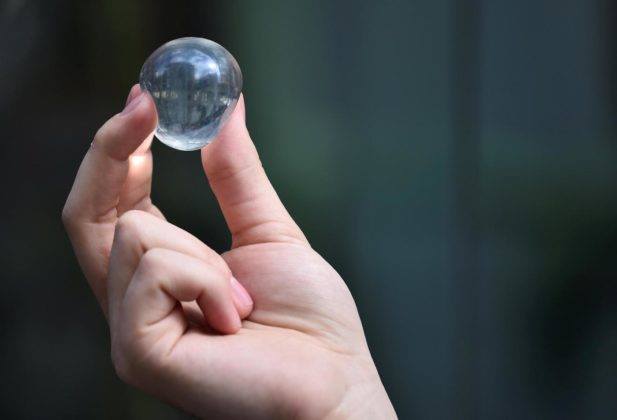With the changing life styles of present civilization, wastage/litter in its various forms has become one of the serious problems for the well being of mother planet earth. Despite the fact that we’re all fully aware of the negative impact plastic water bottles have on our Mother Earth, we continue to consume them at the alarming rate of 480 billion per year. Discarded bottles can be seen polluting here and there on roads, buses, trains and at every place used by human beings. Approximately one billion of those plastic bottles pollute the oceans also. Plastic is cheap to make, which is why it’s used for bottling drinks and other liquids, but that doesn’t mean it’s as good for the environment as it is for the manufacturer. Every plastic bottle takes a thousand years to break down, which leads to massive piles of waste that go nowhere fast.
Manpower and machinery involved in recycling these discarded water bottles are playing their role but not with the pace with which this trash is being generated by human. Efforts are also being made to minimize or restrict the use of the plastic bottles but without much fruitful outcomes. Need of drinking water at every time and every place is becoming an essential habit/requirement of present water-bubble human race. Hence, there is a great need to develop water carriers which are more handy and environmental friendly. In this direction, the biodegradable edible water pods created by Skipping Rocks Lab (London, Uk) in an attempt to make a more environmentally friendly alternative to single-serving plastic bottles.
Water carriers can come in different materials with all shapes and sizes, but to replace one of the most simple, ubiquitous water carriers on the planet - in this case, plastic bottles - it really has to be unbelievably brilliant to have any chance at success. In this direction, “Ooho” is an edible bottle created by Skipping Rocks Lab and is a product that’s perfectly suited for internet hype. Ooho spheres are created by dipping frozen balls of liquid into an algae mixture that forms a membrane around the ice. The ice melts into liquid water and membrane, which is edible
and biodegradable, forms a watertight seal around it. To consume the liquid one can either bite into the tasteless membrane and sip it out or just eat the entire ball, membrane and all. It’s this no-plastic-needed concept that has turned the product into a bit of a viral sensation. Skipping Rocks is currently fundraising online, having already doubled its target with nearly 1,000 independent investors contributing money to the company.
Merits of edible water pods
- The edible water pods can be eaten whole after peeling the outer layer of the package – just like a fruit
- The packaging of the edible water pods will biodegrade in 4-6 weeks
- Producing one bubble creates five times less Carbon dioxide than producing a plastic bottle, and requires nine times less energy.
To make an edible water pod
- The key ingredient for this project is sodium alginate, a natural gelling powder derived from algae. The sodium alginate gels or polymerizes when reacted with calcium. It's a common alternative to gelatin, used in candies and other foods. Calcium gluconate or food-grade calcium chloride can also be used in place of calcium lactate as the calcium source. These ingredients are readily available in grocery stores that carry ingredients for molecular gastronomy.
- In a small bowl, add 1 gram of sodium alginate to 1 cup of water
- Use the hand mixer to make sure the sodium alginate is combined with the water
- In a large bowl, stir 5 grams of calcium lactate into 4 cups of water
- Use rounded spoon to scoop up the sodium alginate solution.
- It is also possible to color and flavor both the edible coating and the liquid inside the pod.
- It's okay to add food coloring to the liquid.
- We can also use flavored beverages rather than water but good to avoid acidic drinks because they affect the polymerization reaction. There are special procedures for dealing with acidic beverages.
Issues to tackle
- Skipping Rocks Lab’s current mission to make Ooho a staple of festivals, marathons, and other outdoor events is a great start, since those are situations in which single serving beverages without waste are well suited, but the wider goal of becoming “the global solution to water and drinks on-the-go” seems to be really an impossible task.
- Unlike bottles, single-gulp water is not something most of us need or would even find a way to use on a daily basis. The membrane is pretty delicate, and certainly not something we can put in a bag or backpack on its own. Because the membrane is edible and being sold at grocery stores it will mean selling it within some kind of other external packaging, completely negating its “packaging free” mission.
